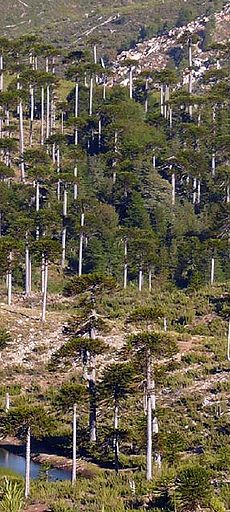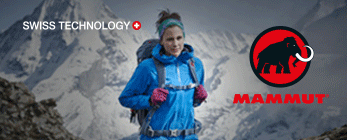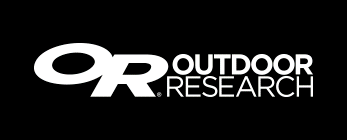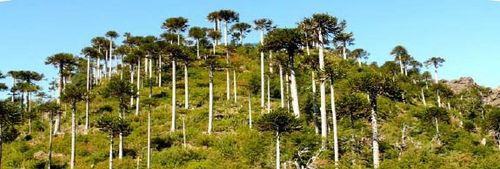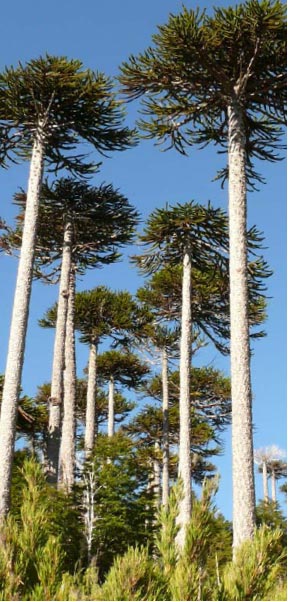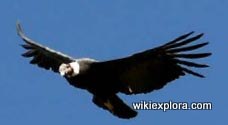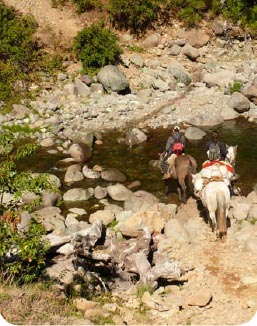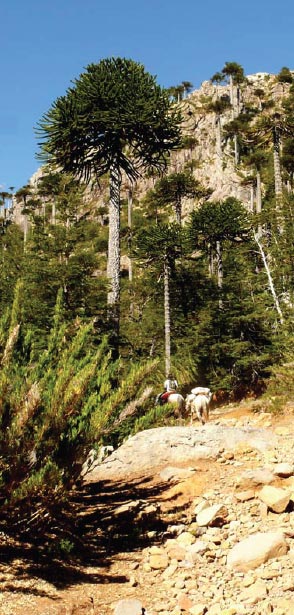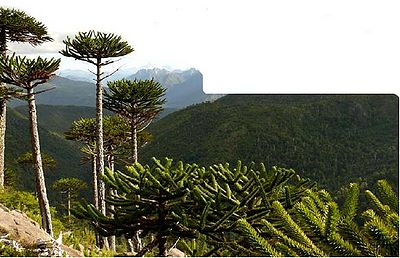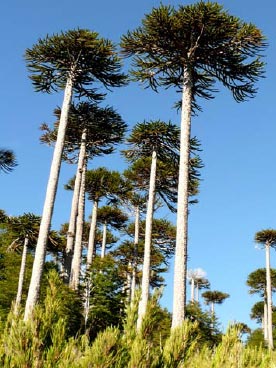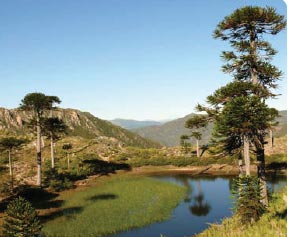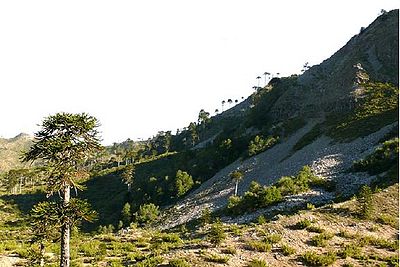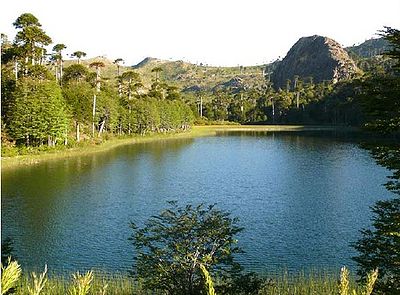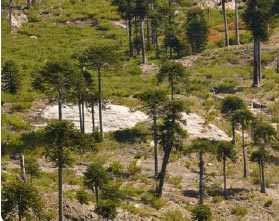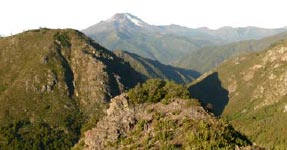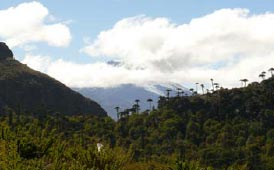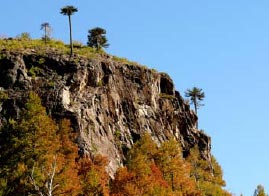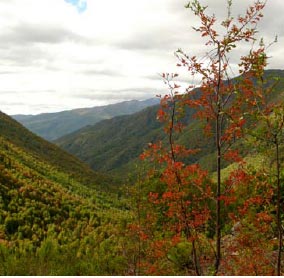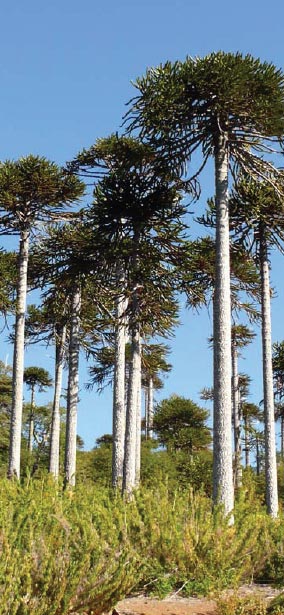Diferencia entre revisiones de «ENG:Reserva Nacional Altos de Pemehue»
m (Texto reemplazado: «{{RutaForm2_english» por «{{RutaForme») |
|||
| (No se muestran 41 ediciones intermedias de 4 usuarios) | |||
| Línea 1: | Línea 1: | ||
| − | {{ | + | [[ES:Reserva Nacional Altos de Pemehue]] |
| + | {{Indexed}} | ||
{{Rutas Patrimoniales english}} | {{Rutas Patrimoniales english}} | ||
| + | {{RutaForme | ||
| + | |Actividad=Trekking | ||
| + | |||
| + | |País=Chile (english) | ||
| + | |CiudadesChile=Los Ángeles | ||
| + | |BellezaEscenica=Atractiva | ||
| + | |Atractivos=Vistas panorámicas, Bosque, Flora atractiva, Fauna atractiva, Río | ||
| + | |Duracion=2 días | ||
| + | Algo Exigente | ||
| + | |||
| + | |Sendero=Tramos sin sendero | ||
| + | |Señalizacion=Suficiente | ||
| + | |Infraestructura=Inexistente | ||
| + | |||
| + | |Latitud1=-37.907156 | ||
| + | |Longitud1=-71.631867 | ||
| + | |Distancia=48200 | ||
| + | |MetrosAscenso= | ||
| + | |MetrosDescenso= | ||
| + | |Comentarios distancia= | ||
| + | |AltitudMedia= | ||
| + | |Primer Autor=Rutas Patrimoniales | ||
| + | |Imágen Principal=Cordillera-de-Pemehue-g3.jpg | ||
| + | |KMLZ=Cordillera_Pemehue.kmz | ||
| + | |ComparteIdayRetorno=Ida y Retorno por la misma ruta | ||
| + | |TipoDeMap=HYBRID | ||
| + | }} | ||
| − | |||
| − | |||
| − | |||
| − | |||
| − | |||
| − | |||
| − | |||
==General Description== | ==General Description== | ||
| + | [[File:Cordillera-de-Pemehue-g1.jpg|thumb|500px|right]] | ||
The Alto Biobío Heritage Route: The | The Alto Biobío Heritage Route: The | ||
Araucarias of the Pemehue Range provides | Araucarias of the Pemehue Range provides | ||
| Línea 36: | Línea 58: | ||
m.a.s.l., mountain veranadas, gullies, | m.a.s.l., mountain veranadas, gullies, | ||
magnificent granite promontories, | magnificent granite promontories, | ||
| − | and basalt columns. | + | and basalt columns.<br> |
| + | |||
| + | |||
The Heritage Route crosses a transition | The Heritage Route crosses a transition | ||
zone in terms of flora and fauna. | zone in terms of flora and fauna. | ||
| Línea 70: | Línea 94: | ||
foundation of the indigenous | foundation of the indigenous | ||
Pehuenche diet. In fact, Pehuenche | Pehuenche diet. In fact, Pehuenche | ||
| − | means “peoples of the pine groves”. | + | means “peoples of the pine groves”.<br> |
| + | |||
This circuit provides a brief synthesis | This circuit provides a brief synthesis | ||
of the transformative capacity of humans | of the transformative capacity of humans | ||
| Línea 86: | Línea 111: | ||
at mountain posts at Santa Rosa Lake | at mountain posts at Santa Rosa Lake | ||
and Butaco River, and at other sites on | and Butaco River, and at other sites on | ||
| − | the shores of rivers or streams. | + | the shores of rivers or streams.<br> |
==Season== | ==Season== | ||
==Expected time== | ==Expected time== | ||
| − | 2 days | + | 2 to 3 days |
==Access== | ==Access== | ||
| + | [[File:Cordillera-de-Pemehue-g2.jpg|thumb|right]] | ||
| + | |||
To get to the Heritage Route, start | To get to the Heritage Route, start | ||
from the city of Los Ángeles in the | from the city of Los Ángeles in the | ||
| Línea 119: | Línea 146: | ||
portion of the Biobío River, uniting | portion of the Biobío River, uniting | ||
the townships of Santa Bárbara and | the townships of Santa Bárbara and | ||
| − | Quilaco. | + | Quilaco.<br> |
| + | |||
Before crossing the bridge, look for | Before crossing the bridge, look for | ||
a sign to the right of the road indicating | a sign to the right of the road indicating | ||
| Línea 163: | Línea 191: | ||
guide and resident of the sector for | guide and resident of the sector for | ||
over 40 years lives just 2.7 km from the | over 40 years lives just 2.7 km from the | ||
| − | entrance to the estate. | + | entrance to the estate.<br> |
| + | |||
When you arrive at Mr. Urrea’s | When you arrive at Mr. Urrea’s | ||
house, you can park your vehicle, rest, | house, you can park your vehicle, rest, | ||
| Línea 200: | Línea 229: | ||
of the circuit and their distances, attractions | of the circuit and their distances, attractions | ||
along the way, and sites of | along the way, and sites of | ||
| − | interest. | + | interest.<br> |
===By car=== | ===By car=== | ||
===Public transport=== | ===Public transport=== | ||
| + | |||
| + | ==Trail markings== | ||
| + | [[File:Cordillera-Pemehue-condor.jpg|thumb|400px|right]] | ||
| + | |||
| + | This guide is indispensable | ||
| + | for anyone | ||
| + | wishing to visit the Alto | ||
| + | Biobío Heritage Route: | ||
| + | The Araucarias of the | ||
| + | Pemehue Range. It provides | ||
| + | written material, | ||
| + | cartography, and images | ||
| + | associated with each | ||
| + | segment of the circuit | ||
| + | to supplement the route | ||
| + | markers and sign postings. | ||
| + | The circuit consists | ||
| + | of 20 guideposts of patrimonial | ||
| + | interest. These are | ||
| + | duly marked with signs | ||
| + | that are generally placed | ||
| + | to the left of the trail. The | ||
| + | estimated times given for | ||
| + | each segment of the circuit | ||
| + | include allowances | ||
| + | for sightseeing and exploring | ||
| + | the route and its | ||
| + | surroundings. This circuit | ||
| + | has been divided into five | ||
| + | segments. Specific characteristics | ||
| + | are associated with each | ||
| + | guidepost, site of interest, and segment | ||
| + | of the circuit. The signposting | ||
| + | implemented along the route includes | ||
| + | four types of markers:<br> | ||
| + | |||
| + | 1. Guidepost marker: A wooden | ||
| + | post, 1.5 meters tall, with a metal | ||
| + | plate indicating the guidepost number, | ||
| + | name, and altitude. Black and | ||
| + | white arrows indicate the distances | ||
| + | to this and the next guidepost.<br> | ||
| + | |||
| + | 2. Route marker: A wooden post, | ||
| + | about 2 meters tall, used to help | ||
| + | indicate the trail in some areas. | ||
| + | The tops of these signs are painted | ||
| + | bright red.<br> | ||
| + | |||
| + | 3. Welcome sign: At the entrance | ||
| + | to Fundo Porvenir. This sign offers | ||
| + | general information about the | ||
| + | route (map, segments, distances, | ||
| + | guideposts).<br> | ||
| + | |||
| + | 4. Informational table: Beside | ||
| + | Guidepost No. 1, Cuyaqui Stream | ||
| + | Ford. This table gives detailed information | ||
| + | about the route and its | ||
| + | main attractions.<br> | ||
==Route description== | ==Route description== | ||
| Línea 222: | Línea 311: | ||
native forests | native forests | ||
and old sawmills. | and old sawmills. | ||
| + | |||
| + | [[File:Cordillera-Pemehue-tramo1-a.jpg|thumb|400px|right]] | ||
| + | [[File:Cordillera-Pemehue-tramo1-b.jpg|thumb|400px|right]] | ||
The route begins at the Cuyaqui | The route begins at the Cuyaqui | ||
| Línea 257: | Línea 349: | ||
mostly second-growth coihue and | mostly second-growth coihue and | ||
raulí, grows denser on both sides of | raulí, grows denser on both sides of | ||
| − | the path. | + | the path.<br> |
| + | |||
As you go on, you will see a | As you go on, you will see a | ||
large landslide covering the trail at | large landslide covering the trail at | ||
| Línea 279: | Línea 372: | ||
machinery, and heavy precipitations | machinery, and heavy precipitations | ||
may have triggered this geomorphologic | may have triggered this geomorphologic | ||
| − | process. | + | process.<br> |
| + | |||
| + | '''Former lumbering operations and | ||
| + | their ecological impact'''<br> | ||
| + | |||
The trail leaves Guidepost No. 2 and | The trail leaves Guidepost No. 2 and | ||
continues through a forest of coihue, | continues through a forest of coihue, | ||
| Línea 321: | Línea 418: | ||
and trucked, weather and road conditions | and trucked, weather and road conditions | ||
permitting, to the estate owner’s | permitting, to the estate owner’s | ||
| − | houses of Fundo Porvenir. | + | houses of Fundo Porvenir.<br> |
| + | |||
This lumber was eventually taken to | This lumber was eventually taken to | ||
the city of Santa Bárbara, where it was | the city of Santa Bárbara, where it was | ||
| Línea 342: | Línea 440: | ||
the piled-up remains of more than | the piled-up remains of more than | ||
2000 inches of sawed coihue lie in | 2000 inches of sawed coihue lie in | ||
| − | nearly complete decomposition. | + | nearly complete decomposition.<br> |
| + | |||
When you leave Guidepost No. 3, | When you leave Guidepost No. 3, | ||
First Sawmill Bench, the old forestry | First Sawmill Bench, the old forestry | ||
| Línea 363: | Línea 462: | ||
sempervirens), chilco (Fuchsia magellanica), | sempervirens), chilco (Fuchsia magellanica), | ||
nalcas (Gunnera tinctoria), | nalcas (Gunnera tinctoria), | ||
| − | and copihues (Lapageria rosea). | + | and copihues (Lapageria rosea).<br> |
| + | |||
Unparalleled beauty and challenging | Unparalleled beauty and challenging | ||
horse-back riding along the shores | horse-back riding along the shores | ||
| Línea 394: | Línea 494: | ||
1970 and 1974, evoke the magnificence | 1970 and 1974, evoke the magnificence | ||
of human entrepreneurship, ingenuity, | of human entrepreneurship, ingenuity, | ||
| − | and effort. | + | and effort.<br> |
| + | |||
Cotton | Cotton | ||
Road (Camino | Road (Camino | ||
| Línea 466: | Línea 567: | ||
circulatory and hepatic disorders. | circulatory and hepatic disorders. | ||
It is also an appetite stimulant that | It is also an appetite stimulant that | ||
| − | aids in digestion. | + | aids in digestion.<br> |
| + | |||
The indigenous Pehuenches relied | The indigenous Pehuenches relied | ||
frequently on the magical use | frequently on the magical use | ||
| Línea 486: | Línea 588: | ||
(Greigea sphacelata) are still | (Greigea sphacelata) are still | ||
highly valued for their medicinal and | highly valued for their medicinal and | ||
| − | nutritional properties. | + | nutritional properties.<br> |
| + | |||
Undoubtedly, the use of forest | Undoubtedly, the use of forest | ||
resources, “lelfunmapu” to the | resources, “lelfunmapu” to the | ||
| Línea 507: | Línea 610: | ||
No. 5 (1000 m.a.s.l.) – after 5.1 km of | No. 5 (1000 m.a.s.l.) – after 5.1 km of | ||
magnificent horse riding – before you | magnificent horse riding – before you | ||
| − | know it. | + | know it.<br> |
| + | |||
| + | '''A first encounter with the | ||
| + | araucarias and their tragic history | ||
| + | in Pemehue'''<br> | ||
| + | |||
After gathering your strength at | After gathering your strength at | ||
Guidepost No. 5 and carefully checking | Guidepost No. 5 and carefully checking | ||
| Línea 551: | Línea 659: | ||
feeds on the piñón, or araucaria | feeds on the piñón, or araucaria | ||
pine nuts, thereby helping to scatter | pine nuts, thereby helping to scatter | ||
| − | the seeds of these centenary trees. | + | the seeds of these centenary trees.<br> |
| + | |||
The importance of the araucaria, | The importance of the araucaria, | ||
or pewen in the language of the | or pewen in the language of the | ||
| Línea 572: | Línea 681: | ||
the deep cultural changes experienced | the deep cultural changes experienced | ||
by the Pehuenches. In 1760, Mariño de | by the Pehuenches. In 1760, Mariño de | ||
| − | Lobera stated: | + | Lobera stated:<br> |
| + | |||
“The subsistence of these people | “The subsistence of these people | ||
is mainly pine nuts taken from pine | is mainly pine nuts taken from pine | ||
| Línea 592: | Línea 702: | ||
from this abundance a highly medicinal | from this abundance a highly medicinal | ||
white resin for a variety of illnesses....” | white resin for a variety of illnesses....” | ||
| − | (3) | + | (3)<br> |
| + | |||
Around the Second Sawmill Bench, | Around the Second Sawmill Bench, | ||
some 200 meters northeast of this former | some 200 meters northeast of this former | ||
| Línea 610: | Línea 721: | ||
and other floral species in a fairly | and other floral species in a fairly | ||
undisturbed natural environment that | undisturbed natural environment that | ||
| − | is rich in biodiversity. | + | is rich in biodiversity.<br> |
| + | |||
At the site of Guidepost No. 6, Second | At the site of Guidepost No. 6, Second | ||
Sawmill Bench, the abandoned, decomposing | Sawmill Bench, the abandoned, decomposing | ||
| Línea 638: | Línea 750: | ||
the trip to the Second Sawmill Bench | the trip to the Second Sawmill Bench | ||
required a bit over three hours of hard, | required a bit over three hours of hard, | ||
| − | exhausting hiking. | + | exhausting hiking.<br> |
===Segment 2=== | ===Segment 2=== | ||
| Línea 646: | Línea 758: | ||
*Season: November to march<br> | *Season: November to march<br> | ||
| − | <span style="color:red">Well-marked, | + | <span style="color:red">Well-marked, stone horse trail, ascending and descending. Panoramic views of the Cuyaqui Stream Gorge, Pemehue peaks, and Las Venenosas Gorge. Scenic views of araucaria forests and prior forest exploitation. Fauna sightings. |
| − | stone | + | |
| − | horse trail, | + | [[File:Cordillera-Pemehue-tramo2-a.jpg|thumb|400px|right]] |
| − | ascending and | + | [[File:Cordillera-Pemehue-tramo2-b.jpg|thumb|400px|right]] |
| − | descending. | + | [[File:Cordillera-Pemehue-tramo2-c.jpg|thumb|400px|right]] |
| − | Panoramic | + | |
| − | views of | + | |
| − | the Cuyaqui | + | |
| − | Stream Gorge, | + | |
| − | Pemehue | + | |
| − | peaks, and | + | |
| − | Las Venenosas | + | |
| − | Gorge. | + | |
| − | Scenic views | + | |
| − | of araucaria | + | |
| − | forests and | + | |
| − | prior forest | + | |
| − | exploitation. | + | |
| − | Fauna | + | |
| − | + | ||
Take your time exploring the vestiges | Take your time exploring the vestiges | ||
| Línea 685: | Línea 782: | ||
Guidepost No. 7 marks the beginning | Guidepost No. 7 marks the beginning | ||
of the final ascent to the peaks | of the final ascent to the peaks | ||
| − | of Las Placetas and Pemehue. | + | of Las Placetas and Pemehue.<br> |
'''The majestic peaks of the | '''The majestic peaks of the | ||
| − | Pemehue and Las Placetas ranges''' | + | Pemehue and Las Placetas ranges'''<br> |
The horse trail continues on past | The horse trail continues on past | ||
| Línea 719: | Línea 816: | ||
and the important presence of snow | and the important presence of snow | ||
at altitudes exceeding 1000 meters | at altitudes exceeding 1000 meters | ||
| − | can be seen from this area. | + | can be seen from this area.<br> |
| + | |||
Here, great, tall granite towers rise | Here, great, tall granite towers rise | ||
over your head, where they are exposed | over your head, where they are exposed | ||
| Línea 748: | Línea 846: | ||
Cuyano streams. You are now 1439 | Cuyano streams. You are now 1439 | ||
m.a.s.l. and have covered 8.5 km of the | m.a.s.l. and have covered 8.5 km of the | ||
| − | Heritage Route. | + | Heritage Route.<br> |
'''Araucarias, culture, and mountainous | '''Araucarias, culture, and mountainous | ||
| − | ecological environments''' | + | ecological environments'''<br> |
Moving on from Guidepost No. 8, | Moving on from Guidepost No. 8, | ||
| Línea 776: | Línea 874: | ||
because of the weeds or bushes in the | because of the weeds or bushes in the | ||
area that are poisonous for livestock, | area that are poisonous for livestock, | ||
| − | principally cattle. | + | principally cattle.<br> |
| + | |||
About 400 meters before Guidepost | About 400 meters before Guidepost | ||
No. 9, Third Sawmill Bench, the trail | No. 9, Third Sawmill Bench, the trail | ||
| Línea 788: | Línea 887: | ||
About 80 meters down, there is a route | About 80 meters down, there is a route | ||
marker on the left that points in the direction | marker on the left that points in the direction | ||
| − | of the old sawmill. | + | of the old sawmill.<br> |
| + | |||
Several piles of sawed araucaria | Several piles of sawed araucaria | ||
lumber, both boards (7x1 inches) and | lumber, both boards (7x1 inches) and | ||
| Línea 811: | Línea 911: | ||
element on this part of the trail, as | element on this part of the trail, as | ||
are the extensive araucaria forests of | are the extensive araucaria forests of | ||
| − | the Cuyano Stream Valley. | + | the Cuyano Stream Valley.<br> |
| + | |||
You will ride a little more than one | You will ride a little more than one | ||
kilometer past Guidepost No. 9 on a | kilometer past Guidepost No. 9 on a | ||
| Línea 838: | Línea 939: | ||
be able to catch a glimpse of a condor | be able to catch a glimpse of a condor | ||
(Vultur gryphus), the majestic and | (Vultur gryphus), the majestic and | ||
| − | symbolic carrion bird of the Andes. | + | symbolic carrion bird of the Andes.<br> |
| + | |||
About 200 meters south of this | About 200 meters south of this | ||
guidepost, riding along the foothills | guidepost, riding along the foothills | ||
| Línea 848: | Línea 950: | ||
right, a detour leads to La Frutilla Lake, | right, a detour leads to La Frutilla Lake, | ||
approximately 2 km southeast. The | approximately 2 km southeast. The | ||
| − | fork is marked by a route marker. | + | fork is marked by a route marker.<br> |
'''El Peñón Range and El Cóndor | '''El Peñón Range and El Cóndor | ||
| − | Lookout''' | + | Lookout'''<br> |
When you pass the fork in the road, | When you pass the fork in the road, | ||
| Línea 862: | Línea 964: | ||
This segment ends one kilometer past | This segment ends one kilometer past | ||
Guidepost No. 11, El Cóndor Lookout | Guidepost No. 11, El Cóndor Lookout | ||
| − | (1467 m.a.s.l.). | + | (1467 m.a.s.l.).<br> |
| + | |||
This guidepost offers an exceptional | This guidepost offers an exceptional | ||
vista of the Cuyano Stream Gully and | vista of the Cuyano Stream Gully and | ||
| Línea 870: | Línea 973: | ||
the zone. The slow ascent to El Peñon | the zone. The slow ascent to El Peñon | ||
Ridge merits frequent stops along the | Ridge merits frequent stops along the | ||
| − | way and is marked by route markers. | + | way and is marked by route markers.<br> |
===Segment 3=== | ===Segment 3=== | ||
| Línea 878: | Línea 981: | ||
*Season: November to march<br> | *Season: November to march<br> | ||
| − | <span style="color:red">Dirt or “trumao” | + | <span style="color:red">Dirt or “trumao” soil horse trail, descending to Santa Rosa Lake and ascending to Portezuelo Trinidad Lookout. Scenic views of veranada landscapes, Santa Rosa Stream Gorge, Callaqui Volcano, Sierra Velluda, lakes. Fauna sightings. |
| − | soil horse trail, | + | |
| − | descending to | + | [[File:Cordillera-Pemehue-tramo3-a.jpg|thumb|400px|right]] |
| − | Santa Rosa Lake | + | [[File:Cordillera-Pemehue-tramo3-b.jpg|thumb|400px|right]] |
| − | and ascending | + | [[File:Cordillera-Pemehue-tramo3-c.jpg|thumb|400px|right]] |
| − | to Portezuelo | + | |
| − | Trinidad | + | |
| − | Lookout. | + | |
| − | Scenic views | + | |
| − | of veranada | + | |
| − | landscapes, | + | |
| − | Santa Rosa | + | |
| − | Stream Gorge, | + | |
| − | Callaqui | + | |
| − | Volcano, Sierra | + | |
| − | Velluda, lakes. | + | |
| − | Fauna sightings. | + | |
'''The descent to Santa Rosa Lake | '''The descent to Santa Rosa Lake | ||
| − | and the Santa Rosa Stream Gorge''' | + | and the Santa Rosa Stream Gorge'''<br> |
The summit of El Peñón Ridge is | The summit of El Peñón Ridge is | ||
| Línea 932: | Línea 1023: | ||
the vicissitudes of nature such as volcanism | the vicissitudes of nature such as volcanism | ||
and the irrational predatory | and the irrational predatory | ||
| − | action of humans. | + | action of humans.<br> |
| + | |||
The most important activities in this | The most important activities in this | ||
mountain region have been forestry | mountain region have been forestry | ||
| Línea 958: | Línea 1050: | ||
of the native forest, especially for species | of the native forest, especially for species | ||
like araucaria, lenga, coihue, roble, | like araucaria, lenga, coihue, roble, | ||
| − | and raulí. | + | and raulí.<br> |
| + | |||
It should also be noted that wood is | It should also be noted that wood is | ||
extracted for firewood, charcoal, and | extracted for firewood, charcoal, and | ||
| Línea 974: | Línea 1067: | ||
used technique for local wood exploitation, | used technique for local wood exploitation, | ||
seriously affecting the forest’s | seriously affecting the forest’s | ||
| − | capacity for regeneration. | + | capacity for regeneration.<br> |
'''Evidence of ancestral Pehuenche | '''Evidence of ancestral Pehuenche | ||
| − | culture in the Pemehue Range''' | + | culture in the Pemehue Range'''<br> |
About 300 meters from Guidepost | About 300 meters from Guidepost | ||
| Línea 997: | Línea 1090: | ||
understanding of the geographic and | understanding of the geographic and | ||
territorial distribution of this culture in | territorial distribution of this culture in | ||
| − | the Andean massifs of the Alto Biobío. | + | the Andean massifs of the Alto Biobío.<br> |
'''Remains of Pehuenche mortar | '''Remains of Pehuenche mortar | ||
| − | near Las Parrillas Lake''' | + | near Las Parrillas Lake'''<br> |
Earlier, the Pehuenches, or people | Earlier, the Pehuenches, or people | ||
| Línea 1027: | Línea 1120: | ||
and recognized by the State of Chile as | and recognized by the State of Chile as | ||
part of their former territories covers | part of their former territories covers | ||
| − | approximately 90,000 hectares (4). | + | approximately 90,000 hectares (4).<br> |
| + | |||
The geographic, ecological, and | The geographic, ecological, and | ||
environmental factors of Alto Biobío | environmental factors of Alto Biobío | ||
| Línea 1068: | Línea 1162: | ||
property, neither selling nor renting it. | property, neither selling nor renting it. | ||
Although it was of common use, it belonged, | Although it was of common use, it belonged, | ||
| − | ultimately, to the community. | + | ultimately, to the community.<br> |
| + | |||
Both the winter pastures, with their | Both the winter pastures, with their | ||
accompanying houses, corrals, crops, | accompanying houses, corrals, crops, | ||
| Línea 1104: | Línea 1199: | ||
to which they were subjected by Chile | to which they were subjected by Chile | ||
and Argentina in the mid nineteenth | and Argentina in the mid nineteenth | ||
| − | century. | + | century.<br> |
| + | |||
Cognitively, the Pehuenches understand | Cognitively, the Pehuenches understand | ||
the forested araucaria formations | the forested araucaria formations | ||
| Línea 1120: | Línea 1216: | ||
the pines of both sexes come into contact | the pines of both sexes come into contact | ||
underground through their roots | underground through their roots | ||
| − | or in the air via mountain parrots. | + | or in the air via mountain parrots.<br> |
| + | |||
Thus, each araucaria forest is an | Thus, each araucaria forest is an | ||
extensive family group known as a | extensive family group known as a | ||
| Línea 1136: | Línea 1233: | ||
thereby assuring the conservation | thereby assuring the conservation | ||
of the trees, their protection, and | of the trees, their protection, and | ||
| − | fertility (5). | + | fertility (5).<br> |
| + | |||
Having passed the white granite | Having passed the white granite | ||
rock, the landscape becomes rather | rock, the landscape becomes rather | ||
| Línea 1149: | Línea 1247: | ||
are nearing Guidepost No. 13, where | are nearing Guidepost No. 13, where | ||
you will rest and camp after your first | you will rest and camp after your first | ||
| − | day on the trail. | + | day on the trail.<br> |
| + | |||
The surface of Santa Rosa Lake is | The surface of Santa Rosa Lake is | ||
approximately 5.2 hectares (280 meters | approximately 5.2 hectares (280 meters | ||
| Línea 1181: | Línea 1280: | ||
The Santa Rosa post was built by Mr. | The Santa Rosa post was built by Mr. | ||
Lizardo Urrea, a former worker on | Lizardo Urrea, a former worker on | ||
| − | Fundo Porvenir, in 1993. | + | Fundo Porvenir, in 1993.<br> |
===Segment 4=== | ===Segment 4=== | ||
| Línea 1189: | Línea 1288: | ||
*Season: November to march<br> | *Season: November to march<br> | ||
| − | <span style="color:red">Poorly | + | <span style="color:red">Poorly indicated or “trumao” soil horse trail over the peaks of the Pemehue Range, descending to Mallín Largo |
| − | indicated or | + | Veranada. Scenic views of pristine araucaria, lenga, and ñirre forests. Panoramic views of Prados de Maitenes Stream Gorge and Huida Ridge. |
| − | “trumao” soil | + | |
| − | horse trail over | + | [[File:Cordillera-Pemehue-tramo4-a.jpg|thumb|400px|right]] |
| − | the peaks of | + | [[File:Cordillera-Pemehue-tramo4-b.jpg|thumb|400px|right]] |
| − | the Pemehue | + | [[File:Cordillera-Pemehue-tramo4-c.jpg|thumb|400px|right]] |
| − | Range, | + | |
| − | descending to | + | |
| − | Mallín Largo | + | |
| − | Veranada. | + | |
| − | Scenic views | + | |
| − | of pristine | + | |
| − | araucaria, | + | |
| − | lenga, and | + | |
| − | ñirre forests. | + | |
| − | Panoramic | + | |
| − | views of | + | |
| − | Prados de | + | |
| − | Maitenes | + | |
| − | Stream Gorge | + | |
| − | and Huida | + | |
| − | + | ||
'''On the road to Portezuelo Trinidad | '''On the road to Portezuelo Trinidad | ||
| Línea 1246: | Línea 1329: | ||
the highest altitude spots on this circuit, | the highest altitude spots on this circuit, | ||
Portezuelo Trinidad Lookout (1528 | Portezuelo Trinidad Lookout (1528 | ||
| − | m.a.s.l.). | + | m.a.s.l.).<br> |
| + | |||
From here, you will have spectacular | From here, you will have spectacular | ||
panoramic views in practically | panoramic views in practically | ||
| Línea 1262: | Línea 1346: | ||
of the Pemehue Range; and, to | of the Pemehue Range; and, to | ||
the west, the peaks of El Peñón Ridge | the west, the peaks of El Peñón Ridge | ||
| − | and Stream. | + | and Stream.<br> |
| + | |||
When you leave Portezuelo Trinidad | When you leave Portezuelo Trinidad | ||
Lookout, the trail continues southward | Lookout, the trail continues southward | ||
| Línea 1275: | Línea 1360: | ||
dotting the lower stretches of El Peñón | dotting the lower stretches of El Peñón | ||
Stream and the highest mountain | Stream and the highest mountain | ||
| − | summits. | + | summits.<br> |
| + | |||
A rocky promontory stands off to the | A rocky promontory stands off to the | ||
right of the trail, about 40 to 50 meters | right of the trail, about 40 to 50 meters | ||
| Línea 1299: | Línea 1385: | ||
views of Quilapehuén Hill and | views of Quilapehuén Hill and | ||
El Peñón Stream Gorge, an affluent of | El Peñón Stream Gorge, an affluent of | ||
| − | the Santa Rosa Stream, await you. | + | the Santa Rosa Stream, await you.<br> |
'''The araucarias of the Prados de | '''The araucarias of the Prados de | ||
Maitenes Stream Gorge and El | Maitenes Stream Gorge and El | ||
| − | Peñón Ridge''' | + | Peñón Ridge'''<br> |
After crossing the remains of an old | After crossing the remains of an old | ||
| Línea 1323: | Línea 1409: | ||
Thus, the area’s ecological integrity is | Thus, the area’s ecological integrity is | ||
adequate for managing the conservation | adequate for managing the conservation | ||
| − | of its resources. | + | of its resources.<br> |
| + | |||
From this perspective, the Pemehue | From this perspective, the Pemehue | ||
Range has important ecological characteristics | Range has important ecological characteristics | ||
| Línea 1343: | Línea 1430: | ||
in which numerous invertebrates, | in which numerous invertebrates, | ||
amphibians, and fish can develop | amphibians, and fish can develop | ||
| − | their life cycles. | + | their life cycles.<br> |
| + | |||
Nonetheless, one of the main | Nonetheless, one of the main | ||
threats to the conservation of these | threats to the conservation of these | ||
| Línea 1356: | Línea 1444: | ||
recovering through a process of ecological | recovering through a process of ecological | ||
succession of second-growth | succession of second-growth | ||
| − | forests. | + | forests.<br> |
| + | |||
Guidepost No. 16 is sheltered by | Guidepost No. 16 is sheltered by | ||
gorgeous araucaria individuals. Here | gorgeous araucaria individuals. Here | ||
| Línea 1382: | Línea 1471: | ||
forest. Huida Ridge is visible in the distance | forest. Huida Ridge is visible in the distance | ||
and Mallín Largo Veranada is a | and Mallín Largo Veranada is a | ||
| − | bit nearer. | + | bit nearer.<br> |
| − | '''Mallín Largo Veranada''' | + | '''Mallín Largo Veranada'''<br> |
Congratulations! You have nearly | Congratulations! You have nearly | ||
| Línea 1435: | Línea 1524: | ||
making it possible to see Los Caciques | making it possible to see Los Caciques | ||
Hill to the north and, in the distance, | Hill to the north and, in the distance, | ||
| − | Huida Ridge to the east. | + | Huida Ridge to the east.<br> |
| − | + | ||
===Segment 5=== | ===Segment 5=== | ||
| Línea 1444: | Línea 1532: | ||
*Season: November to march<br> | *Season: November to march<br> | ||
| − | <span style="color:red">Dirt horse trail | + | <span style="color:red">Dirt horse trail bordering the Prados de Maitenes Stream and Waterfall. Scenic views of Prados de Maitenes Stream Gorge, Butaco River, and araucarias atop the Huida Ridge. Quila growth and raulí forests in the Butaco River Gorge. End of Route at the Prados del Butaco Post. |
| − | bordering | + | |
| − | the Prados | + | [[File:Cordillera-Pemehue-tramo5-a.jpg|thumb|400px|right]] |
| − | de Maitenes | + | [[File:Cordillera-Pemehue-tramo5-b.jpg|thumb|400px|right]] |
| − | Stream and | + | [[File:Cordillera-Pemehue-tramo5-c.jpg|thumb|right]] |
| − | Waterfall. | + | |
| − | Scenic views | + | |
| − | of Prados | + | |
| − | de Maitenes | + | |
| − | Stream Gorge, | + | |
| − | Butaco River, | + | |
| − | and araucarias | + | |
| − | atop the | + | |
| − | Huida Ridge. | + | |
| − | Quila growth | + | |
| − | and raulí forests | + | |
| − | in the Butaco | + | |
| − | River Gorge. | + | |
| − | End of | + | |
| − | the Prados del | + | |
| − | Butaco Post. | + | |
'''The descent along the Prados de | '''The descent along the Prados de | ||
| − | Maitenes Stream''' | + | Maitenes Stream'''<br> |
After riding about 25 minutes from | After riding about 25 minutes from | ||
| Línea 1489: | Línea 1561: | ||
off to the left of the route. At the base | off to the left of the route. At the base | ||
of this rocky formation is a beautiful, | of this rocky formation is a beautiful, | ||
| − | pale reddish lenga forest. | + | pale reddish lenga forest.<br> |
| + | |||
About 20 minutes from this place, | About 20 minutes from this place, | ||
you will cross back over the Prados de | you will cross back over the Prados de | ||
| Línea 1516: | Línea 1589: | ||
stony with large rocks and tree trunks | stony with large rocks and tree trunks | ||
dragged along by the swift-moving | dragged along by the swift-moving | ||
| − | waters. | + | waters.<br> |
| + | |||
Guidepost No. 18, Prados de | Guidepost No. 18, Prados de | ||
Maitenes Waterfall (1063 m.a.s.l.), is | Maitenes Waterfall (1063 m.a.s.l.), is | ||
| Línea 1535: | Línea 1609: | ||
the bed of the stream, countless tree | the bed of the stream, countless tree | ||
trunks have been dragged into place | trunks have been dragged into place | ||
| − | by the water. | + | by the water.<br> |
| + | |||
As you head towards Guidepost No. | As you head towards Guidepost No. | ||
19, or the Confluence Lookout (Butaco | 19, or the Confluence Lookout (Butaco | ||
| Línea 1563: | Línea 1638: | ||
final descent to the Butaco River and | final descent to the Butaco River and | ||
the last part of your ride to Guidepost | the last part of your ride to Guidepost | ||
| − | No. 20, Prados de Maitenes Post. | + | No. 20, Prados de Maitenes Post.<br> |
'''At the Butaco River Gorge and | '''At the Butaco River Gorge and | ||
| − | Huida Ridge''' | + | Huida Ridge'''<br> |
From Guidepost No. 19 on, the | From Guidepost No. 19 on, the | ||
| Línea 1585: | Línea 1660: | ||
second, smaller open area, practically | second, smaller open area, practically | ||
at the end of the descent to the Butaco | at the end of the descent to the Butaco | ||
| − | River. | + | River.<br> |
| − | '''Enjoying the Butaco River''' | + | '''Enjoying the Butaco River'''<br> |
About 400 meters ahead, the waters | About 400 meters ahead, the waters | ||
| Línea 1603: | Línea 1678: | ||
icy waters, we strongly suggest that | icy waters, we strongly suggest that | ||
you stop and take a look at the birthdate | you stop and take a look at the birthdate | ||
| − | on your driver’s license! | + | on your driver’s license!<br> |
| − | '''The end of the route''' | + | '''The end of the route'''<br> |
After your aquatic adventure, the | After your aquatic adventure, the | ||
| Línea 1632: | Línea 1707: | ||
of the Pemehue Range (1063 m.a.s.l.) | of the Pemehue Range (1063 m.a.s.l.) | ||
after two days of interesting and magnificent | after two days of interesting and magnificent | ||
| − | adventures. Congratulations! | + | adventures. Congratulations!<br> |
==Recommendations== | ==Recommendations== | ||
{{Topoguide|}} | {{Topoguide|}} | ||
| − | + | ||
| + | *Once you reach the end of the old lumber trail | ||
that penetrates the forest, you should pay attention | that penetrates the forest, you should pay attention | ||
to the route markers that indicate which | to the route markers that indicate which | ||
way to go, especially if you are travelling without | way to go, especially if you are travelling without | ||
a guide. | a guide. | ||
| − | + | ||
| + | *The total estimated time for doing the Heritage | ||
Route, that is, the 27 km from Guidepost No. 1 to | Route, that is, the 27 km from Guidepost No. 1 to | ||
Guidepost No. 20, is about 12.5 hours horseback. | Guidepost No. 20, is about 12.5 hours horseback. | ||
| Línea 1657: | Línea 1734: | ||
segments 1, 2, and 3 are the most interesting in | segments 1, 2, and 3 are the most interesting in | ||
terms of ecology and landscape. | terms of ecology and landscape. | ||
| − | + | ||
| + | *An important part of the route runs over | ||
rocky terrain, with gravel or stones on the trail. | rocky terrain, with gravel or stones on the trail. | ||
This makes the ride more challenging, especially | This makes the ride more challenging, especially | ||
| Línea 1670: | Línea 1748: | ||
do the circuit to Guidepost No. 13, Santa Rosa | do the circuit to Guidepost No. 13, Santa Rosa | ||
Lake, an estimated two-day round trip. | Lake, an estimated two-day round trip. | ||
| − | + | ||
| + | *Take appropriate clothes and camping equipment | ||
(tent, synthetic sleeping bags, waterproof | (tent, synthetic sleeping bags, waterproof | ||
parkas, gloves, appropriate boots, other camping | parkas, gloves, appropriate boots, other camping | ||
| Línea 1679: | Línea 1758: | ||
your own data regarding the route. A good | your own data regarding the route. A good | ||
camera is indispensable! | camera is indispensable! | ||
| − | + | ||
| + | *Prior to the trip, you should stop by the police | ||
station (retén de Carabineros) in Loncopangue | station (retén de Carabineros) in Loncopangue | ||
and tell them your itinerary, final destination, | and tell them your itinerary, final destination, | ||
and the expected length of your stay in the area. | and the expected length of your stay in the area. | ||
| − | + | ||
| + | *Be extremely careful with campfires and bring | ||
back any food scraps, plastics, or other waste | back any food scraps, plastics, or other waste | ||
from the trip so that other adventurers like yourself | from the trip so that other adventurers like yourself | ||
will have an equal chance to enjoy the area. | will have an equal chance to enjoy the area. | ||
| − | + | ||
| + | *Finally, contact Mr. Lizardo Urrea (Fundo | ||
Porvenir; phone: 984682590) to prepare and | Porvenir; phone: 984682590) to prepare and | ||
coordinate your journey. | coordinate your journey. | ||
| − | == | + | ==External Links== |
| + | ===Weather=== | ||
| + | {{Tiempo atmosferico Los Angeles}} | ||
| − | + | {{Trekkings Chile english}} | |
| − | + | [[category:Routes in english]] | |
| − | {{Trekkings Chile}} | + | |
Revisión actual del 19:12 18 dic 2018
|
|
|
| |||||||||||||||||||||||||||||||||||||||||
General Description
The Alto Biobío Heritage Route: The
Araucarias of the Pemehue Range provides
an opportunity and a challenge
for anyone who loves horseback riding
and observing nature. This circuit
offers vistas of extensive araucaria,
raulí, roble, ñirre, and lenga forests,
as well as the chance to see the recent
remains of human interventions
in Andean ecosystems. The beautiful
views and panoramas visible from
the peaks of the Pemehue and Las
Placetas ranges are the ideal complement
for the swift-flowing and impetuous
streams and rivers that bring
the exuberant native vegetation to life,
giving it shape and colour. The trail,
hand-carved out of volcanic rock, is itself
a remnant of earlier forest penetration.
The route runs through one of the
last refuges for araucaria forests in the
Alto Biobío, boasting a spectacular geography
of beautiful lakes at over 1000
m.a.s.l., mountain veranadas, gullies,
magnificent granite promontories,
and basalt columns.
The Heritage Route crosses a transition
zone in terms of flora and fauna.
Nationally, this area hosts the highest
diversity of vegetable and animal
species. The Pemehue Range constitutes
a mixed biogeographic unit,
combining elements associated with
sclerophyll and xerophyte vegetable
formations such as Nothofagus
and araucaria forests. From an ecological
point of view, the area consists
of two ecoregions: Chilean Brush
(Matorral Chileno) and Temperate
Valdivian Forest (Bosque Templado
Valdiviano). Biogeographically, it includes
the biotic regions of Central
Chile and the Subantarctic. The area is
extraordinarily rich in endemic biota,
amparticularly
in monospecies plant and
animal genera and families. On the
other hand, anthropogenic intervention
has resulted in a high degree of
deterioration in some vegetable and
animal communities. Botanically,
the area is characterized by splendid
araucaria (Araucaria araucana)
forests. This Chilean conifer grows at
over 900 m.a.s.l. and its name comes
from the Pewen vernacular. Its seeds,
rich in starch, were and are the nutritional
foundation of the indigenous
Pehuenche diet. In fact, Pehuenche
means “peoples of the pine groves”.
This circuit provides a brief synthesis
of the transformative capacity of humans
in the mountain environments
of central-southern Chile. It also offers
visitors the chance to see emblematic
fauna such as condors, pumas, and
foxes. Geomorphologic processes in
mountain environments are also readily
apparent along the route. The circuit
should be done over a minimum
of four days of slow-paced rides over
wide, well-marked stone and dirt trails.
Along the way, you can rest and camp
at mountain posts at Santa Rosa Lake
and Butaco River, and at other sites on
the shores of rivers or streams.
Season
Expected time
2 to 3 days
Access
To get to the Heritage Route, start
from the city of Los Ángeles in the
central valley, 132 km from the city of
Concepción and 116 km from the city
of Chillán. You should exit old Route 5
South (Ruta 5 Sur), turning left (southeast)
at the intersection with Route
Q-61-R, connecting Los Ángeles and
Santa Bárbara. After driving 40 km
on a paved road, you will reach Santa
Bárbara, a small rural town located
on the north shore of the Biobío River.
Here, you can find services and equipment
for travellers, including all the
basic supplies for your adventure. You
can also visit a colonial Spanish frontier
fort found near the main square
(plaza), about 200 meters from the
Biobío River. After leaving Santa
Bárbara, continue heading southeast
on Route Q-61-R for another 19 km
until reaching the El Piulo bridge. This
bridge spans the narrowest and deepest
portion of the Biobío River, uniting
the townships of Santa Bárbara and
Quilaco.
Before crossing the bridge, look for
a sign to the right of the road indicating
the distance to the beginning of
the Heritage Route (33.2 km). At this
crossing, the Biobío River is 30 meters
deep and no more than 25 meters
wide. The emblematic river spills
swiftly over rocks carved out by its
fast-flowing waters. After crossing the
bridge, you will go another 1.7 km until
reaching an intersection with Q-75,
a gravel road that connects the villages
of Quilaco and Loncopangue. Turn
left towards Loncopangue, a small rural
settlement about 6.5 km from the
turnoff. Along the way, you can enjoy
beautiful panoramic views of the
Biobío River Valley and the mountain
spurs that surround it. When you leave
Loncopangue (still on Q-75), you’ll
go 12.7 km to Balseadero de Callaqui
(Callaqui Ferry). This is also the site of
the first indigenous Pehuenche community
in the Alto Biobío, known as
Callaqui. Take Route Q-151 along the
south shore of the Biobío. This dirt road
connects Callaqui Ferry with Fundo
Porvenir and is in poor shape; it ends
at the wall of the Pangue Hydroelectric
Plant. The access to Fundo Porvenir is
5.9 km from Callaqui Ferry. Here, a
metal sign welcomes visitors to the
government estate, an important area
for the protection and conservation of
natural resources, and provides information
about the Heritage Route. On
the estate itself, you will see the dwellings
of the Pehuenche families living
on the low prairie and the remains, still
standing, of the old houses of Fundo
Porvenir. Mr. Lizardo Urrea, a local
guide and resident of the sector for
over 40 years lives just 2.7 km from the
entrance to the estate.
When you arrive at Mr. Urrea’s
house, you can park your vehicle, rest,
and make the necessary arrangements
for doing the route on horseback;
overnight lodging is also available.
The route itself begins about 2
km from the house, which is near the
village of Ralco or Alto Biobío on the
southern shore of the Biobío River.
You should set out for Guidepost No.
1 (Cuyaqui Stream) on horseback.
Before reaching the actual circuit, you
will cross beneath large metal towers
bearing the transmission lines from
the Pangue and Ralco hydroelectric
plants. The magnitude of the effects
that these megaprojects have had
in terms of landscape modification
in the Biobío River Valley is evident:
steel giants march in neat rows across
forests, rivers, and streams, leaving
mountainsides bleeding and deeply
wounded by the designs of modernity
and, farther south, the Pangue plant
and dam interrupt the life, magic, and
basic cycles of the formidable Biobío
River. Some 600 meters from the home
of Mr. Urrea, there is a duly marked
detour. Follow the path to the right,
riding along the Cuyaqui Stream until
reaching Guidepost No. 1. This first
guidepost is accompanied by an informational
table with valuable data
about the route: a map, the segments
of the circuit and their distances, attractions
along the way, and sites of
interest.
By car
Public transport
Trail markings
This guide is indispensable
for anyone
wishing to visit the Alto
Biobío Heritage Route:
The Araucarias of the
Pemehue Range. It provides
written material,
cartography, and images
associated with each
segment of the circuit
to supplement the route
markers and sign postings.
The circuit consists
of 20 guideposts of patrimonial
interest. These are
duly marked with signs
that are generally placed
to the left of the trail. The
estimated times given for
each segment of the circuit
include allowances
for sightseeing and exploring
the route and its
surroundings. This circuit
has been divided into five
segments. Specific characteristics
are associated with each
guidepost, site of interest, and segment
of the circuit. The signposting
implemented along the route includes
four types of markers:
1. Guidepost marker: A wooden
post, 1.5 meters tall, with a metal
plate indicating the guidepost number,
name, and altitude. Black and
white arrows indicate the distances
to this and the next guidepost.
2. Route marker: A wooden post,
about 2 meters tall, used to help
indicate the trail in some areas.
The tops of these signs are painted
bright red.
3. Welcome sign: At the entrance
to Fundo Porvenir. This sign offers
general information about the
route (map, segments, distances,
guideposts).
4. Informational table: Beside
Guidepost No. 1, Cuyaqui Stream
Ford. This table gives detailed information
about the route and its
main attractions.
Route description
Segment 1
Cuyaqui Stream Ford - Second Sawmill Bench
- Distance: 6,2 km.
- Walking Time: 2 hr 30 min.
- Season: November to march
Wide, wellmarked, stone horse trail ascending along the edge of the Cuyaqui Stream. Scenic views of native forests and old sawmills.
The route begins at the Cuyaqui
Stream Ford, following an old forest
penetration road. Abandoned in 1981,
the trail borders the Cuyaqui Stream
Gorge and the foothill known as San
Pablo Hill. The Cuyaqui Stream crossing
is about 20 meters wide with a
rocky bed. Its swiftly running waters
pour generously into the Biobío River
another 500 meters downstream,
just before the wall of the Pangue
Hydroelectric Plant. The Biobío zigzags
down from its headwaters,
found at over 1000 meters altitude in
the peaks of the Pemehue Range. For
more than seven kilometres, these
hemmed-in waters sustain several
species and ecosystems that are ecologically
very valuable. The topography
of the first part of the circuit, some
1700 meters from the Cuyaqui Stream
Ford, is abrupt, with steep slopes, deep
ravines, and landslides. The dominant
vegetation is roble (Nothofagus
obliqua), raulí (Nothofagus alpina),
and coihue (Nothofagus dombeyi);
quila (Chusquea quila) is also important.
Here the trail is in good shape,
although you should ride carefully in
the landslide areas and where the trail
is narrowest. The landscape changes
as of 650 m.a.s.l., and the vegetation,
mostly second-growth coihue and
raulí, grows denser on both sides of
the path.
As you go on, you will see a
large landslide covering the trail at
Guidepost No. 2. This is an example
of the effects of natural disturbances
on the landscape. The colonization
and re-vegetation of this extensive
landslide area shows the ecosystem’s
capacity for recovery. The landslide
is about 50 meters wide and 500 meters
long, running from the head of
San Pablo Hill to the Cuyaqui River.
Look for quila and species of the genus
Nothofagus such as coihue and
roble colonizing the stony, otherwise
bare soil. The former residents
of Fundo Porvenir say that the landslide
occurred at the beginning of the
1980s. The construction of the forest
penetration road, the traffic of heavy
machinery, and heavy precipitations
may have triggered this geomorphologic
process.
Former lumbering operations and
their ecological impact
The trail leaves Guidepost No. 2 and
continues through a forest of coihue,
roble, and raulí. Guidepost
No. 3, First Sawmill Bench,
is about 300 meters
along the trail.
This open sector,
approximately one hectare, is crossed
by a small stream and surrounded by
native vegetation. The vestiges of a
sawmill that began operating here in
1972 stand in mute witness to the intense
lumber exploitation of the 1970s
and 1980s. These ruins include two
steam engines (8 and 12 horsepower),
half buried and rusted by the passage
of time. One of these machines,
with bits of metal and wood encrusted
among its iron parts, is right beside
the trail, completely abandoned and
overgrown, a manifestation of human
colonization – an ancient epic in
which humans and machines fought
side by side to conquer Pemehue – and
the natural forces that limit its realization.
You will also see old buildings
and the remains of a cabin used as a
post by the workers of the time. The
First Sawmill Bench was one of the
first lumber projects in the Pemehue
Range, initiating operations, mainly
the sawing of coihue, in 1972 and
shutting them down in 1981. When
operational, the sawmill produced
approximately 4000 inches of sawed
timber daily and the now-abandoned
steam engines provided the motor
force for both a saw and an edger.
After sawing, the lumber was stacked
and trucked, weather and road conditions
permitting, to the estate owner’s
houses of Fundo Porvenir.
This lumber was eventually taken to
the city of Santa Bárbara, where it was
stored in stockyards owned by a company
also named Santa Bárbara and
the former owner of Fundo Porvenir,
Mr. José Ángel Ciappa. During peak
exploitation periods (December to
March), anywhere from seven to ten
trucks would leave from here daily
with 400 inches of wood apiece, mainly
coihue and raulí. Early in the 1980s,
the economic problems of the owner
of Fundo Porvenir resulted in the permanent
shutdown of the First Sawmill
Bench. The sector and the landscape
now bear the irrefutable stamp of the
predatory action of humans. Along
with machines and penetration roads,
the piled-up remains of more than
2000 inches of sawed coihue lie in
nearly complete decomposition.
When you leave Guidepost No. 3,
First Sawmill Bench, the old forestry
road continues upwards. The landscape
is characterized by forests of
coihue, hazelnut (Gevuina avellana),
and quila brush (Chusquea quila). The
topography is precipitous and the bed
of the Cuyaqui Stream slowly becomes
visible from the trail. The slope of the
river increases sharply and Cuyaqui
Valley becomes much narrower and
more boxed-in, with enormous mature
coihue specimens standing along
the shores. This part of the trail runs
along the stream and you will have the
chance to see plant species associated
with more humid or uliginous environments.
These include laurel (Laurelia
sempervirens), chilco (Fuchsia magellanica),
nalcas (Gunnera tinctoria),
and copihues (Lapageria rosea).
Unparalleled beauty and challenging
horse-back riding along the shores
of the Cuyaqui Stream
Guidepost No. 4, Cotton Road
(Camino Algodones) is about one kilometer
away from Guidepost No. 3.
At the beginning of this road, an old
wooden fence marks the threshold to
an area that clearly differs – in ecology
and morphology – from the previous
segments. The road’s name stems
from ironic references made by the former
workers of Fundo Porvenir given
the extremely harsh, wild nature of the
old trail, which was about 700 meters
long. Here, enormous trunks sprawl
across the bed of the Cuyaqui Stream,
dragged there by the rapids whereas,
upstream, you can see magnificent
panoramic views of the araucaria forests
of the Las Placetas Range. As of
Guidepost No. 4, the trail runs along
the Cuyaqui Stream, mostly on its left
shore. Your ride along the wide trail is
complicated by abundant rocks and
large stones, and some parts should
be done on foot. The characteristics of
this section of the trail, built between
1970 and 1974, evoke the magnificence
of human entrepreneurship, ingenuity,
and effort.
Cotton
Road (Camino
Algodones) heads
out of the dense
vegetation and into an
open clearing that grants
a beautiful vista stretching
from the bed of the Cuyaqui
Stream to the surrounding
mountain ridges. As you
ride along, you will see forests
of coihue, hazelnut,
quila, and maqui brush
(Aristotelia chilensis) along the shores
of the Cuyaqui Stream, as well as occasional
specimens of tineo or palo
santo (Weinmannia trichosperma),
chilco, laurel, nalcas, and other species,
most of which are associated with
uliginous environments. You will also
hear the lyrical songs of the choroy or
narrow-billed parakeet (Enicognathus
ferrugineus), the chucao (Scelorchilus
rubecula rubecula), and the pitio
(Colaptes pitius pitius), natural inspiration
available only at the heights
of Pemehue. Another 400 meters beyond
Guidepost No. 4, the trail continues
its ascent, crossing over to the
right or north shore of the Cuyaqui
Stream. The characteristics on this
side of the stream are similar to those
on the south shore. Large rocks and
stones are interspersed among the
dense, damp vegetation. The stream
bed is associated with rich biodiversity.
At the end of Cotton Road, the
trail crosses back over the Cuyaqui
Stream (Guidepost No. 5). The sight of
huge trees felled and dragged along
by the force of the current makes this
the ideal place for a well-earned rest.
Here you can dally over the flora and
fauna, finding a wide variety of trees,
bushes, ferns, and nalcas. Introduced
medicinal plants like poleo (Mentha
pulegium) and mint (Mentha rotundifolia)
can be found all along the
circuit and in all its different ecological
environments, interspersed with
diverse native plants that also have
medicinal applications. Historically,
the plants used by the Pehuenches
and colonists were those associated
mainly with the underbrush. Llushu
lawen (Hymenophyllum dentatum),
a fern species, is used to heal the belly
button of newborns; llanca lawen
(Lycopodium paniculatum) is used to
treat ulcers and tumors; and lafquen
lawen (Euphorbia portulacoides) is a
water remedy. One of the best-known
native medicinal plants is cachan lawen
or cachanlagua (Erythraea chilensis).
Infusions of this plant can be
used for several therapeutic purposes,
including treating fevers and high
blood pressure, aiding circulation for
rheumatic conditions, and combatting
circulatory and hepatic disorders.
It is also an appetite stimulant that
aids in digestion.
The indigenous Pehuenches relied
frequently on the magical use
of plants. For example, women used
huentru lawen (Ophioglossum vulgatum)
to conceive male children and
huilel lawen (Hypolepis rugosula)
helped the machi or shaman forecast
problems caused by huekufu or
demons (1). Love potions to separate
lovers were prepared with huedahue
(Gleichenia litorales) and latue
(Latuapubzjlora). The latter is a highly
feared plant that can be lethal but
is a hallucinogen when taken in small
doses. The plants known as country
celery or panul (Apium panul), panke
or nalka (Gunnera tinctoria), and chupón
(Greigea sphacelata) are still
highly valued for their medicinal and
nutritional properties.
Undoubtedly, the use of forest
resources, “lelfunmapu” to the
Mapuches, was a fundamental aspect
of the Pehuenche and colonial
lifestyles. It defined some of the main
features of their identity and particular
world view. Along with plants, a large
amount of mushrooms were or are
also collected. More than ten species
of these are from the genus Cyttaria.
Known commonly as changles and
digüeñes, these fungi are associated
with the Nothofagus forest, especially
roble or pellín (N. obliqua) and
coigue (N. dombeyi). You will have so
much native flora to wonder over for
its enormous ecological and cultural
value that you will arrive at Guidepost
No. 5 (1000 m.a.s.l.) – after 5.1 km of
magnificent horse riding – before you
know it.
A first encounter with the
araucarias and their tragic history
in Pemehue
After gathering your strength at
Guidepost No. 5 and carefully checking
your riding gear, you should follow
the trail that leads away from Cuyaqui
Stream heading towards Guidepost
No. 6, Second Sawmill
Bench. On this
segment of
the circuit,
the
level
of
difficulty
of the trail is
medium. The path is
mostly dirt, with very light
“trumao” soil in some sectors
and stones and larger
rocks in others, especially
right before Guidepost No. 6,
Second Sawmill Bench. The
slope of the trail also sharpens,
revealing the erosive effects
of the action of water.
The predominant vegetation
is coihue and quila, which are
shorter and lower in this drier
atmosphere. You are now
riding at over 1000 meters of
altitude, and the trail crosses
a landscape predominated
by araucaria forests
(Araucaria araucana)
and the magnificent
rocky promontories of the tallest peaks
of the Pemehue and Las Placetas ranges.
Listen again for the melodic calls
of the choroy (Enicognathus leptorhynchus),
also known as “wawilma”
or the slender-billed parakeet. This
small, meridonial, native Andean parrot
feeds on the piñón, or araucaria
pine nuts, thereby helping to scatter
the seeds of these centenary trees.
The importance of the araucaria,
or pewen in the language of the
Mapuches, is due to the conifer’s ecological
value as well as its capacity
to sustain the sociocultural development
of the Pehuenche peoples during
the prehispanic periods. It is for
this very reason that they began to
call themselves Pehuenche, meaning
the people of the pewen, or the araucarias.
The araucarias grow in areas
known as pewenmapu or pewenento,
the land or area of the pewen (2). Very
early accounts report the importance
of this resource to the subsistence of
the former hunters that inhabited this
mountainous region, a tradition that
has been maintained to date in spite of
the deep cultural changes experienced
by the Pehuenches. In 1760, Mariño de
Lobera stated:
“The subsistence of these people
is mainly pine nuts taken from pine
cones of different kinds and qualities,
the same as their trees... and the number
of them is so great that these trees
are in all the thickets and forests and
are sufficient for providing for all the
people, which are innumerable, so
much so that they are used to make
bread, wine, and stews. And as the
main harvest occurs at a given time
of the year, they have large silos made
underground in which they store the
pine nuts, hiding aboveground several
water channels... because if they
do not have water above them, they
sprout and then rot... They also distil
from this abundance a highly medicinal
white resin for a variety of illnesses....”
(3)
Around the Second Sawmill Bench,
some 200 meters northeast of this former
lumber operation, is the spring
whose waters give life and vigour to
the Cuyaqui Stream. You can reach
the spring on foot, following a barely
visible path through the quila brush.
A pool of water about 5 meters across
accumulates at the mouth of the
spring, forming a 3-meter-high waterfall.
A small creek (about 1-2 litres per
second) flows out from the waterfall,
giving rise to the headwaters of the
Cuyaqui Stream. Here, you can enjoy
native vegetation such as ferns, nalcas,
and other floral species in a fairly
undisturbed natural environment that
is rich in biodiversity.
At the site of Guidepost No. 6, Second
Sawmill Bench, the abandoned, decomposing
remains of countless
coihue and araucaria trunks, some
over a meter in diameter, are spread
out over an area of sparse vegetation.
About 10000 inches of uncut wood,
mostly coihue, were left here. When
operational, the facilities and sawing
equipment could generate about
1500 inches of wood, mainly araucaria,
daily. Coihue was processed at
the First Sawmill Bench, since the standard
operating procedures of the day
required moving the wood from the
higher areas in trucks or with the aid
of oxen. The effort made by the sawmill
workers is noteworthy, especially
considering that they dealt not only
with the rigors of forestry operations in
isolated, wild environments, but also
with the lengthy trip made daily from
their homes on Fundo Porvenir or in
the village of Ralco to the exploitation
sites on the mountain. In those days,
the trip to the Second Sawmill Bench
required a bit over three hours of hard,
exhausting hiking.
Segment 2
Second Sawmill Bench - El Cóndor Lookout
- Distance: 6 km.
- Walking Time: 2 hr 30 min.
- Season: November to march
Well-marked, stone horse trail, ascending and descending. Panoramic views of the Cuyaqui Stream Gorge, Pemehue peaks, and Las Venenosas Gorge. Scenic views of araucaria forests and prior forest exploitation. Fauna sightings.
Take your time exploring the vestiges
of the Second Sawmill Bench.
Then mount back up and head out
slowly, making frequent stops, along
the trail leading to the summits of Las
Placetas Range and the first spurs of
the Pemehue Range. About 500 meters
past Guidepost No. 6, you can
take a break and gather your strength
in an area free of vegetation that offers
interesting and lovely views of the
Cuyaqui Stream Gorge and the volcanic
and granite peaks and promontories
of the surrounding mountain
formations. On this route dominated
by araucaria forests and quila underbrush,
Guidepost No. 7 marks the beginning
of the final ascent to the peaks
of Las Placetas and Pemehue.
The majestic peaks of the
Pemehue and Las Placetas ranges
The horse trail continues on past
the headwaters of Cuyaqui Stream,
now heading towards Guidepost No.
8, Las Placetas and Pemehue Lookout.
After zigzagging along for about 800
stony meters, the trail into the forest
straightens out, with the peaks of Las
Placetas Range on the right hand side
and the magnificent Cuyaqui Stream
Gorge on the left. The vista here extends
some 500 meters in length and
is broad and unspeakably beautiful.
The location offers an unforgettable
view of the Cuyaqui Stream Ravine
and the enormous rocky promontories
of Las Placetas Range, crowned by
araucaria forests. During this segment
of the circuit, you will see how the natural
elements affect the conformation
and physiognomy of the landscape.
A shelf carved from granite and cornices
of abundant stony material on
the mountainside evoke not only the
transformative force of human beings,
but also of the elements in mountain
environments. Processes associated
with sharp changes in temperature
and the important presence of snow
at altitudes exceeding 1000 meters
can be seen from this area.
Here, great, tall granite towers rise
over your head, where they are exposed
to the actions of the wind,
water, and temperatures. The very
heights of Las Placetas Range seem
to stretch out, reaching toward the
heavens; gorgeous araucaria specimens
stand firm against the forces of
the elements, taking us back to
earlier times, environments,
and landscapes. Watch
for a route marker about
100 meters beyond Guidepost No. 8
and to the right of the route. This sign
points the way to an excellent lookout
point over Las Venenosas Gorge
and Cuyano Stream. If you continue
riding another 100 meters over the
peaks of the Pemehue Range, heading
towards Guidepost No. 8, you will
be granted a magnificent, expansive
view with beautiful panoramas of the
Las Placetas and Pemehue ranges,
Callaqui Volcano, the tall and irregular
peaks of Sierra Velluda, and the
mountain valleys of the Cuyaqui and
Cuyano streams. You are now 1439
m.a.s.l. and have covered 8.5 km of the
Heritage Route.
Araucarias, culture, and mountainous
ecological environments
Moving on from Guidepost No. 8,
you will begin a slow descent to the
southeast, in the direction of Guidepost
No. 9. The trail runs along the north
mountainside of the Cuyano Stream
Gorge, only about 200 meters from the
high watershed peaks of the Pemehue
Range. On this segment of the circuit,
the forests are predominantly araucaria
and lenga (Nothofagus pumilio),
with the ever-present associated quila
underbrush. Keep your eyes open for
interesting flowers blooming in the
rocky walls on both sides of the trail.
To the right, the Cuyano Stream Gorge
and Las Venenosas Veranadas are surrounded
by vast stretches of araucaria
forests previously subjected to intense
and unmitigated forestry exploitation.
This grazing area was named
Las Venenosas (The Poisonous Ones)
because of the weeds or bushes in the
area that are poisonous for livestock,
principally cattle.
About 400 meters before Guidepost
No. 9, Third Sawmill Bench, the trail
turns off to the left, following a narrow
path that crosses a native forest.
This path merges with the former
forest penetration road around the
Third Sawmill Bench. You can get to
the sawmill by veering right after the
marker indicating Guidepost No. 9.
About 80 meters down, there is a route
marker on the left that points in the direction
of the old sawmill.
Several piles of sawed araucaria
lumber, both boards (7x1 inches) and
blocks (10x10 inches) can be seen at
the Third Sawmill Bench, where nearly
40000 inches of araucaria have
laid abandoned and decaying since
1978. Blackened mounds of sawdust
are scattered among the vegetation,
perfectly humidified by the passage
of time. Trees and bushes grow in the
middle of what was once an intensive
work centre, revealing the length of the
abandonment. When you are done at
the Third Sawmill Bench, head back
southwards to the old forestry trail.
Here you will take up a more shadowy
segment of the circuit, surrounded
constantly by araucaria, lenga, coihue,
ñirre, and quila forests. The remains of
large trees lying over the trail are a typical
element on this part of the trail, as
are the extensive araucaria forests of
the Cuyano Stream Valley.
You will ride a little more than one
kilometer past Guidepost No. 9 on a
wide, easy-riding trail before coming
to Guidepost No. 10, Las Venenosas
Lookout (1424 m.a.s.l.). This offers an
unforgettable vantage for looking
out over the Cuyano Stream Gorge
and Las Venenosas Veranadas. At
this guidepost, the changes in vegetation
and landscape are more evident.
Some grounds lack vegetation
and the rest are dominated by quila
and coirón, characteristic species of
Andean steppe and mountain veranada
environments over 1200 m.a.s.l.
Coirón is a dominant species in the
area. Its name likely comes from a
Mapuche dialect and alludes more to
the rolled and grassy form of the leaf
(Andropogon argenteum, Festúceas),
which has several sections, than to the
species itself. Basically, this means that
the leaves have whorls and are hard
and pointy. If you are lucky, you will
be able to catch a glimpse of a condor
(Vultur gryphus), the majestic and
symbolic carrion bird of the Andes.
About 200 meters south of this
guidepost, riding along the foothills
of the Pemehue Range, the wide forestry
trail reaches its end after 1000 km
of interesting and spectacular riding.
The trail forks and, to the left, you will
see the ascent to El Peñón Ridge; to the
right, a detour leads to La Frutilla Lake,
approximately 2 km southeast. The
fork is marked by a route marker.
El Peñón Range and El Cóndor
Lookout
When you pass the fork in the road,
you will begin the climb up to the peaks
of El Peñón Range, moving along the
north face, bare of trees but covered
in sparse quila and coirón brush. Here,
you’ll need to keep a close eye on the
route markers in order to stay on track.
This segment ends one kilometer past
Guidepost No. 11, El Cóndor Lookout
(1467 m.a.s.l.).
This guidepost offers an exceptional
vista of the Cuyano Stream Gully and
you might even catch a glimpse of the
surprising and unparalleled flight of
the condors that habitually soar over
the zone. The slow ascent to El Peñon
Ridge merits frequent stops along the
way and is marked by route markers.
Segment 3
El Cóndor Lookout - Santa Rosa Lake
- Distance: 1,8 km.
- Walking Time: 1 hr. 30 min.
- Season: November to march
Dirt or “trumao” soil horse trail, descending to Santa Rosa Lake and ascending to Portezuelo Trinidad Lookout. Scenic views of veranada landscapes, Santa Rosa Stream Gorge, Callaqui Volcano, Sierra Velluda, lakes. Fauna sightings.
The descent to Santa Rosa Lake
and the Santa Rosa Stream Gorge
The summit of El Peñón Ridge is
at 1507 meters altitude. This is the
site of Guidepost No. 12, Descent to
Santa Rosa Lake. To the east, you can
see the beautiful mountainscapes
of the Santa Rosa Stream Gorge and
Callaqui Volcano and, to the south,
Portezuelo Trinidad. We recommend
that you check your riding gear at
this guidepost, as you will be commencing
a slow, steep descent. Back
in the saddle and heading towards the
lakes Las Parrillas, Las Totoras, and La
Tasa, watch for the numerous whitish
trunks covering the foothills lining
the Santa Rosa Stream Gorge. These
provide more evidence of human action
and the use of fire to clear the
land for livestock, a common practice
of the colonists. These burns assured
the regeneration of grasses for the following
season but have impeded the
normal recovery of the affected native
forest and have intensified erosion
and soil loss in the primary burn sectors,
mostly veranadas. The blackened
bark of some araucarias indicates the
fire reached as far as their stands. The
thick bark of these trees reflects the
millenary adaptive processes of this
formidable conifer when faced with
the vicissitudes of nature such as volcanism
and the irrational predatory
action of humans.
The most important activities in this
mountain region have been forestry
and livestock. The often indiscriminate
exploitation of forest resources
has caused serious damage to the forests
and natural resources associated
with these ecosystems. The need for
the local communities to make suitable
areas for planting and grazing
has meant a progressive decrease in
vegetative covering, as have uncontrolled
burns and cutting of the forest,
common practices among both
the colonists and indigenous peoples.
Moreover, large-scale lumber exploitation
by the company Ralco S.A. between
1940 and 1970 and by the former
owners of Fundo Porvenir along
with the high demand for wood by
the cellulose industry contributed
heavily to the decrease of vegetative
covering. This resulted in a loss of the
productive and regenerative capacity
of the native forest, especially for species
like araucaria, lenga, coihue, roble,
and raulí.
It should also be noted that wood is
extracted for firewood, charcoal, and
building materials, especially fences,
in areas next to winter pastures. The
intervention in the forest has not usually
been regulated by management
plans and, therefore, the agricultural
methods applied do not necessarily
guarantee the appropriate use of the
soil. On the contrary, the “floreo del
bosque”, or cutting down the best individuals
without considering longterm
consequences, was a commonly
used technique for local wood exploitation,
seriously affecting the forest’s
capacity for regeneration.
Evidence of ancestral Pehuenche
culture in the Pemehue Range
About 300 meters from Guidepost
No. 12, to the right of the trail, is a magnificent
promontory of white granite
rock dripping stone fragments down
the mountainside and forming a cone
of low-level erosion. At the apex, araucaria
specimens were witness to the
unbreakable will of the colonists in
these extremely harsh ecological environments.
In this sector, you should
pay close attention to the trail, noting
the remains of Pehuenche utensils used
in their historic travels to the pinalerías,
or araucaria forests. Fragments of a
stone mortar used to grind pine nuts
evokes past travels and broadens our
understanding of the geographic and
territorial distribution of this culture in
the Andean massifs of the Alto Biobío.
Remains of Pehuenche mortar
near Las Parrillas Lake
Earlier, the Pehuenches, or people
of the araucarias, occupied the valleys
of the western slopes of the Andes
Mountains, from Antuco Volcano in
the north to Villarrica Volcano in the
south, according to the geographic
distribution of the araucaria forests, or
pinalerías. Nowadays, the Pehuenche
population and communities are
geographically limited in Chile to
the sector of the Andes Mountains
known as Alto Biobío, which is, administratively,
made up by the townships
of Alto Biobío and Quilaco in the
Biobío Region and Lonquimay in the
Araucanía Region. The Pehuenches of
Alto Biobío are grouped into 11 communities,
located on the shores of the
Queuco and Biobío rivers, with an estimated
population of 7000. In this
area, which is part of the Alto Biobío
Indigenous Development Area (ADI),
the land occupied by the Pehuenches
and recognized by the State of Chile as
part of their former territories covers
approximately 90,000 hectares (4).
The geographic, ecological, and
environmental factors of Alto Biobío
have determined the lifestyle and
sociocultural organization of the
Pehuenche communities, as well
as the useful and symbolic
relationships that have
been established with
these territories and
their natural resources.
Thus, we are able
to distinguish between
different occupied
spaces that form
part of a productive cycle
sustaining the traditional
life style of both the
Pehuenche communities
and the colonists that lived in the area,
including Pemehue Range and Fundo
Porvenir. These spaces include veranadas,
winter pastures, pine groves, native
forest, rivers, and lakes. For the
Pehuenches, an important part of the
territory is shared and is used based
on the annual cycle of activities and
the availability of natural resources. In
this sense, each family owns the goods
that it is able to gather, but some communities
still do not recognize exclusive
individual propriety over land or
territories that, ancestrally, belonged
to the community, such as the pine
groves or araucaria forests and the veranadas.
Once, any Pehuenche could
cultivate the soil as they liked and the
products were theirs to keep. However,
they could not use the earth itself as
property, neither selling nor renting it.
Although it was of common use, it belonged,
ultimately, to the community.
Both the winter pastures, with their
accompanying houses, corrals, crops,
and native forests, and the veranadas
are associated with the annual
weather regime and depend on the
presence or absence of snow. Once the
snow begins to melt in the spring, the
Pehuenches and colonists began the
ascent to the veranadas, taking their
animals to the new pastures and beginning
the pine nut harvest. The territorial
continuity between these ecological
environments, that is, the free
movement of people and resources
over them, was a fundamental aspect
for the economic and cultural development
of these peoples, as well as
for the management of the natural
resources. Their manner of relating to
the earth, based largely on the transhumance
livestock and collection
of wild fruits (pine nuts, hazelnuts,
digüeñes) is common throughout the
entire Alto Biobío and in the Pemehue
Range. The names of the mountains,
rivers, and streams are reminiscent of
the fact that the route that you are
travelling on was once part of the area
through which the Pehuenche peoples
were distributed geographically and
historically. Most recently, this area
sheltered the indigenous peoples from
the brutal onslaught and persecution
to which they were subjected by Chile
and Argentina in the mid nineteenth
century.
Cognitively, the Pehuenches understand
the forested araucaria formations
in the same way they do
their own society. They distinguish
clearly between feminine (fruit-bearing)
specimens, or domopewen, and
masculine specimens, or wentrupewen;
specimens with male and female
cones are understood to be bisexual.
Fecundation of the araucarias is anemophilous,
or done through the wind;
the Pehuenches understood this fertilization
to be a sexual process in which
the pines of both sexes come into contact
underground through their roots
or in the air via mountain parrots.
Thus, each araucaria forest is an
extensive family group known as a
lobpewen, and equivalent to a lobche,
or Pehuenche family. The Pehuenches
believe that these forests are protected
by supernatural beings: the old
man of the pewen cares for the male
trees, whereas the old woman of the
pewen looks after the female trees.
Family prayers are said to these entities
prior to the harvest and community
prayers at the end of this. These
rites are performed in the forests themselves,
thereby assuring the conservation
of the trees, their protection, and
fertility (5).
Having passed the white granite
rock, the landscape becomes rather
dry and arid, with scant trees and
low quila and coirón brush. Santa
Rosa Lake appears, surrounded by
araucaria forests and quila bush. In
the distance, an enormous basalt
rock, reaching up to around 100
meters height, and Portezuelo
Trinidad greet you. Good news: you
are nearing Guidepost No. 13, where
you will rest and camp after your first
day on the trail.
The surface of Santa Rosa Lake is
approximately 5.2 hectares (280 meters
wide and 380 meters long) and the
lake is 9.5 meters deep at its centre. It is
surrounded by araucaria forests and
quila brush and its shores, which
lack beach areas, are covered
by junquillo vegetation. The
rather warm waters of
the lake are inviting
and you
should
indulge in some well-earned rest, relaxation,
and recreation. This is the
ideal place to camp and prepare your
food. You can get water from a spring
just 20 meters from the marker that indicates
Guidepost No. 13. Remember
that you must, with the help of your
guide, unsaddle your mounts and put
them out to pasture. It is also a good
time to look for dry firewood and light
your campfire beside the wooden post
used by the colonists on their habitual
trips to the area. Such constructions
are characteristic of the mountain veranadas
and are usually used for shelter
by the herdsmen when they drive
their animals to the high pastures.
The Santa Rosa post was built by Mr.
Lizardo Urrea, a former worker on
Fundo Porvenir, in 1993.
Segment 4
Santa Rosa Lake - Mallín Largo Veranada
- Distance: 6 km.
- Walking Time: 3 hr.
- Season: November to march
Poorly indicated or “trumao” soil horse trail over the peaks of the Pemehue Range, descending to Mallín Largo Veranada. Scenic views of pristine araucaria, lenga, and ñirre forests. Panoramic views of Prados de Maitenes Stream Gorge and Huida Ridge.
On the road to Portezuelo Trinidad and the Prados de Maitenes Stream Gorge
You should wake the next day renewed
and refreshed, ready to take
to the trail for a second day of riding.
Start by heading south towards
Guidepost No. 14, Mirador Portezuelo
Trinidad; this is now the fourth segment
of the circuit. After leaving Santa
Rosa Lake, the trail slowly climbs down
to El Peñón Stream. The landscape
is characterized by quila and coirón
and, to the south, Portezuelo Trinidad,
a mountain ridge surrounded by low,
sparse brush. To the right of El Peñón
Stream, whose stony bed does not
exceed 3 meters across, you can see
a rocky formation nearly 100 meters
high with some araucaria specimens
colonizing its stony base. After riding
another 300 meters, you will see two
large rocks to the right of the route
polished by the action of the snow.
The locals call these Las Lápidas (the
tombstones), as the area was once a
Pehuenche burial site. Take your time
exploring this place and enjoying the
gorgeous vistas of Santa Rosa Lake
and Gorge. When you take up the trail
again, you will head towards one of
the highest altitude spots on this circuit,
Portezuelo Trinidad Lookout (1528
m.a.s.l.).
From here, you will have spectacular
panoramic views in practically
all directions and your pictures are
sure to reveal mountain images and
landscapes of unmatched beauty. To
the northeast and in the distance are
the white, irregular peaks of Sierra
Velluda; to the east is the magnificent
Callaqui Volcano (also known as
Callaquen Volcano), its fumaroles, and
the foothills of the araucaria-forested
Colluco Veranada; to the south lie
Quilapehuén Hill and the high watersheds
of the Pemehue Range; and, to
the west, the peaks of El Peñón Ridge
and Stream.
When you leave Portezuelo Trinidad
Lookout, the trail continues southward
along the peaks of El Peñón Ridge towards
Guidepost No. 15, Quilapehuén
Hill Lookout (1716 m.a.s.l.). This is the
beginning of a pristine araucaria forest
and the Prados de Maitenes Stream
Gorge. The trail between Guideposts
14 and 15 is characterized by scant
trees, with some araucaria specimens
dotting the lower stretches of El Peñón
Stream and the highest mountain
summits.
A rocky promontory stands off to the
right of the trail, about 40 to 50 meters
high. A small araucaria grove crowns
the nearly vertical wall at the highest
part, or the cornice. The trail here
is fairly tricky, with abundant stone
matter that was loosened or broken
off from the rock by the effects of gravity,
the rain, and abrupt temperature
changes, falling from the highest parts
of the volcanic cornice. Lake Trinidad
is also part of this landscape with its
typical varied geomorphologic forms
and ecological processes of mountain
environments at over 1500 meters altitude.
This site also offers an unforgettable
view of Quilapehuén Hill and
evidence of old burnings or fires. Two
araucarias stand off to the right of
the trail, offering a warm welcome to
Guidepost No. 15, where excellent panoramic
views of Quilapehuén Hill and
El Peñón Stream Gorge, an affluent of
the Santa Rosa Stream, await you.
The araucarias of the Prados de
Maitenes Stream Gorge and El
Peñón Ridge
After crossing the remains of an old
fence, you will move to the left, slowly
going through a shadowy araucaria
forest. Some 1000 meters to the
south, you will reach Guidepost No. 16,
El Peñón Ridge. This route borders the
peaks of Pemehue, El Diablo Stream
Gorge, and the northern part of the
Prados de Maitenes Stream Gorge.
Here, you can take in the entire magnitude
of this beautiful amphitheatre
of araucaria. The presence of the socalled
pine beard or pine moss indicates
that these forests, associated
with lenga and quila, were not past
victims of fire or lumber exploitation.
Thus, the area’s ecological integrity is
adequate for managing the conservation
of its resources.
From this perspective, the Pemehue
Range has important ecological characteristics
that warrant special care
for the conservation, protection, and
support of biodiversity. These aspects
include the presence of part of the deciduous
Andean forest of the Biobío, six
inadequately known species, and 34
species in precarious stages of conservation
such as the guiña (Felix guigna),
condor, “crybaby lizard” (Liolaemus
chiliensis), frog (Telmatobufo venustus),
and Creole perch (Percichthys trucha)
as well as endemic species like the
amphibian Alsodes vittatus. In turn,
the water courses running through
the ravines provide a favourable environment
in which numerous invertebrates,
amphibians, and fish can develop
their life cycles.
Nonetheless, one of the main
threats to the conservation of these
ecosystems and their associated biodiversity
is the vulnerability of the soils
given hydric erosion processes derived
mainly from the traditional and historic
uses to which the area’s natural
resources have been subjected. In spite
of this, the native vegetation that you
see along the route has been slowly
recovering through a process of ecological
succession of second-growth
forests.
Guidepost No. 16 is sheltered by
gorgeous araucaria individuals. Here
you can recover your strength and
observe the veranadas of the Prado
de Maitenes Stream Gorge towards
the east and, towards the south, the
enormous rocky promontory of Los
Caciques Hills, with araucarias on
both its foothills and its highest peaks.
This same site offers an excellent panorama
of El Diablo River Gorge on the
right, that is, to the west. We recommend
you take a brief rest here and
check your riding gear in preparation
for the descent to Guidepost No. 17,
Mallín Largo Veranada. It is especially
important that you watch for route
markers on the way down as these
will indicate an eastward shift in the
trail. Once at Guidepost No. 17, the
predominant vegetation is low quila
brush, along with coirón and lowgrowing
ñirre (Nothofagus antartica)
forest. Huida Ridge is visible in the distance
and Mallín Largo Veranada is a
bit nearer.
Mallín Largo Veranada
Congratulations! You have nearly
reached Guidepost No. 17, or Mallín
Largo Veranada, in the Prados de
Maitenes Stream Gorge. You have ridden
20 km of the route and have been
on horseback for almost 10 hours all
told. You and your mount should be
ready for another break. Here, an interesting
ñirre grove covers about three
hectares of a more or less flat, grassy,
damp area used for livestock and set
beside the headwaters of the Prados
de Maitenes Stream. The ruins of an
old corral and the presence of cattle
mark this sector, which is one of the
most important veranadas on Fundo
Porvenir. The area was previously occupied
by Genaro Sotomayor and his
family, former tenants of the Fundo,
as well as other colonists from farther
south. The cheese produced here and
at the Prados de Butaco post supplied
the local families and was sold, mostly
in the city of Mulchén. Interestingly,
the most intense occupation of these
mountains occurred around the 1950s,
when the colonists of Fundo Porvenir
first burned the land to make it suitable
for livestock. This practice, although
at odds with conservation
processes, was highly useful for family
subsistence and was habitual in
spring or early winter, as it allowed the
regeneration of grasses such as coirón,
arvejilla, liuto (Alstroemeria aurea),
cat’s ear (Hypochoeris radicata), and
quila. This fodder is necessary for feeding
and maintaining livestock, valuable
capital in the productive systems
of the rural Andes Mountains. You are
now nearing the end of the fourth
segment of the circuit, which heads
downhill and to the east, towards the
confluence of the Prado de Maitenes
Stream and the Butaco River. From
here on, the trail slowly draws nearer
to the Prado de Maitenes Stream,
making it possible to see Los Caciques
Hill to the north and, in the distance,
Huida Ridge to the east.
Segment 5
Mallín Largo Veranada - Prados del Butaco
- Distance: 7 km.
- Walking Time: 3 hr.
- Season: November to march
Dirt horse trail bordering the Prados de Maitenes Stream and Waterfall. Scenic views of Prados de Maitenes Stream Gorge, Butaco River, and araucarias atop the Huida Ridge. Quila growth and raulí forests in the Butaco River Gorge. End of Route at the Prados del Butaco Post.
The descent along the Prados de
Maitenes Stream
After riding about 25 minutes from
Guidepost No. 17, the trail passes
through a more or less dry sector with
abundant quila and coirón. It runs
along the Prados de Maitenes Stream
towards Guidepost No. 18, Prados de
Maitenes Stream Waterfall. After going
about 500 meters, you should cross
the stony stream from the south to the
north shore; the bed here is about 5
meters wide. After riding another 15
to 20 minutes, the trail reaches a fairly
elevated point. If you look to the
southeast, you will see nearly the entire
length of the Prados de Maitenes
Stream Gorge and Callaqui Volcano; a
rocky promontory of sheer walls with
araucaria-decorated summits stands
off to the left of the route. At the base
of this rocky formation is a beautiful,
pale reddish lenga forest.
About 20 minutes from this place,
you will cross back over the Prados de
Maitenes Stream. At this crossing site,
you will have a view of the confluence
of this stream with the larger Butaco
River, which flows to the area from farther
north. The trail continues to follow
the stream, although this is now
some 80 to 100 meters below the trail.
The panoramic views on this segment
of the circuit are extremely lovely,
especially on the south-facing mountainside,
that is, to the left of the trail,
where forests of roble and raulí are predominant.
Some 200 meters ahead,
several waterfalls drop down over volcanic
rock, giving rise to a spectacular
cascade about 40 or 50 meters high.
The trail continues along, slowly approaching
the bed of the Prados de
Maitenes Stream, crossing interesting
lenga, ñirre, and raulí forests on
the way. Here, the stream is approximately
30 meters wide and the bed is
stony with large rocks and tree trunks
dragged along by the swift-moving
waters.
Guidepost No. 18, Prados de
Maitenes Waterfall (1063 m.a.s.l.), is
off to the left of the trail. To the right,
a raulí forest stands testimony to the
ravages of past fires. The waterfall, in
a part of the stream with large stones
and rocks, is approximately seven meters
tall and gives rise, at its base, to a
pool that is some 20 meters long and
seven meters wide. This is the perfect
place to stop for a well deserved swim
and to let your horse have a drink of
water. If you look downstream, you will
see a number of damp vegetation species,
including nalcas, growing along
both shores of the stream whereas, in
the bed of the stream, countless tree
trunks have been dragged into place
by the water.
As you head towards Guidepost No.
19, or the Confluence Lookout (Butaco
River-Prados de Maitenes Stream), you
will continue descending and moving
slowly away from the stream. The trail
crosses open fields used for livestock,
where the vegetation is dominated
by sparse, low brush, mostly quila and
coirón. In the sector, you will eventually
see cattle grazing on the fodder.
As you approach Guidepost No. 19,
the vegetation becomes progressively
denser and second-growth roble and
raulí begin to dominate the landscape.
Once at Guidepost No. 19, you can look
out over the Butaco River Gorge and
see the confluence of this river with
the Prados de Maitenes Stream and
the imposing Huida Ridge, its highest
peaks topped with araucarias. From
this point on, the trail runs through a
thick forest of raulí, coihue, and roble,
halfway up the mountainside that
drops down to the western shore of the
Butaco River. Later, you will begin the
final descent to the Butaco River and
the last part of your ride to Guidepost
No. 20, Prados de Maitenes Post.
At the Butaco River Gorge and
Huida Ridge
From Guidepost No. 19 on, the
landscape is dominated by secondgrowth
stands of pure raulí, with the
associated quila underbrush. The trail,
narrow and surrounded by vegetation,
is clearly marked. After riding for
about 25 minutes through this type
of forest and ecological environment,
you will reach an open sector with
evidence of past human intervention;
scant vegetation and the remains of
blackened tree trunks tell of old burns.
Continue through the raulí formations
until you reach a small creek or stream,
at which point you will come upon a
second, smaller open area, practically
at the end of the descent to the Butaco
River.
Enjoying the Butaco River
About 400 meters ahead, the waters
of the Butaco River, an important
affluent of the Biobío River in the upper
reaches of its basin, are tranquil and
placid. The stream is about ten meters
wide and no more than two meters
deep, surrounded by abundant,
humid vegetation. A small sand and
gravel beach invites you in for a hardearned,
refreshing swim. However, before
heeding the cries of your travelweary
bones and jumping into these
icy waters, we strongly suggest that
you stop and take a look at the birthdate
on your driver’s license!
The end of the route
After your aquatic adventure, the
horse ride continues along another
400 meters until reaching Prados del
Butaco Post, built alongside the river
in 1995 by Mr. Lizardo Urrea. Follow
the trail over beautiful, more or less flat
terraces, with the river to your left and
dense forests of roble, coihue, and ñirre
to your right. Once at Guidepost No.
20, you will see the old buildings and
wooden fences of the mountain post.
Summer grasses and cattle in the sector
indicate that the area is still a grazing
veranada. From here, you have
gorgeous views of La Moñuda Hill
(1783 m.a.s.l.) some three kilometers to
the south and Huida Ridge to the east.
Your second day of riding has come
to an end and you should prepare to
camp, gathering dry firewood and offering
your horse and its weary bones
a rest. You are now at kilometer 27 of
the Alto Biobío circuit: The Araucarias
of the Pemehue Range (1063 m.a.s.l.)
after two days of interesting and magnificent
adventures. Congratulations!
Recommendations
- This trekking is described in full detail in the following topoguide of the Ministery of Public Patrimony. The printed guide can be obtained for free in the Ministery:56-2-3512100 -> 2325. It is hihgly recommended to take it to the walk, as it enriches the experience with descrptions of flora, fauna, geography and geology.
- Once you reach the end of the old lumber trail
that penetrates the forest, you should pay attention to the route markers that indicate which way to go, especially if you are travelling without a guide.
- The total estimated time for doing the Heritage
Route, that is, the 27 km from Guidepost No. 1 to Guidepost No. 20, is about 12.5 hours horseback. However, we recommend that you take four days to do the circuit (round trip), riding to Guidepost No. 13, Santa Rosa Lake (approximately seven hours), on the first day and to Guidepost No. 20, Prados del Butaco (5.5 hours) on the second day. These are good campsites, where clean water and dry firewood are available. You can also camp at Guidepost No. 17, Mallín Largo Veranada-Los Maitenes Gorge. However, depending on your timeframe and the weather, you may want to limit your visit. In such cases, segments 1, 2, and 3 are the most interesting in terms of ecology and landscape.
- An important part of the route runs over
rocky terrain, with gravel or stones on the trail. This makes the ride more challenging, especially in the sector known as “Cotton Road” (Camino Algodones). Riding here implies a progressively greater expenditure of energy and, therefore, a higher physical demand. Thus, you should prepare yourself well for the ride and take the necessary equipment considering that the trail is a recommended four-day ride. We suggest that travellers with little equestrian experience only do the circuit to Guidepost No. 13, Santa Rosa Lake, an estimated two-day round trip.
- Take appropriate clothes and camping equipment
(tent, synthetic sleeping bags, waterproof parkas, gloves, appropriate boots, other camping gear). Rain is possible, even in January and February, and the temperature drops at night. Remember to throw a compass and a GPS into your backpack, as these will allow you to generate your own data regarding the route. A good camera is indispensable!
- Prior to the trip, you should stop by the police
station (retén de Carabineros) in Loncopangue and tell them your itinerary, final destination, and the expected length of your stay in the area.
- Be extremely careful with campfires and bring
back any food scraps, plastics, or other waste from the trip so that other adventurers like yourself will have an equal chance to enjoy the area.
- Finally, contact Mr. Lizardo Urrea (Fundo
Porvenir; phone: 984682590) to prepare and coordinate your journey.
External Links
Weather




